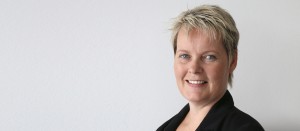
Photo from A2SEA News
Kirsten Bank Christensen is the Vice President of Group HSEQ at A2SEA and the Health and Safety Topic Chair for EWEA OFFSHORE 2015. A2SEA prides itself on its safety culture, which pursues a goal of zero harm and empowers each of its employees to make their own and their colleagues’ safety a top priority. In this interview, Christensen previews some of the topics that will be discussed during her session Managing Risk: Reducing Cost session at EWEA OFFSHORE 2015 on Wednesday, 11 March, 14:30-16:00.
Why does offshore need to focus on health and safety?
For offshore wind construction companies, safety isn’t a choice – it’s a must. While we will never eliminate the risk associated with our industry, risk management requires us to include specialist competencies and many years of practical experience in our work to ensure the full understanding of the complex working environment offshore. We must recognise that innovation in health and safety whilst ensuring continued safe operation is an ongoing requirement.
The offshore renewables industry is still considered a relatively small, young industry moving from learning by doing towards a far more structured approach that incorporates expertise and advanced practices from other industries, for example the oil & gas industry.
How do health and safety practices vary from country to country, and how can we overcome the differences?
Utility companies, industry organisations and contractors face various types of local regulation, legislation and industry standards. When expanding to new markets offshore, legislation may differ extensively or perhaps even prove to be non-existing.
There a big advantages to sharing good practice guidelines, and these may prove to be a very valuable source of information when it comes to setting a uniform standard for performance within a given operation. These guidelines can also be used for future reference in the form of industry standards which can go above and beyond legislation.
It takes safe working systems, experience, resources and training to make health and safety not just an operational safeguard but also an industry with a good health and safety record.
What are the biggest risks in offshore wind energy?
A lot of new players are entering the offshore wind market. They might not have the biggest experience in installation, but they have a desire to succeed in the business and are taking risks that experienced operators might not take. Also, the safety culture and maturity of safety is likely to vary across the industry which might jeopardise the standards of safety and actual performance on site.
What is the industry’s health and safety record?
The industry is still maturing and we can still improve. We should be better at learning from other industries that have standards on safety from operation to the education of crew. And we should be better at cooperation across borders while sharing a uniform approach to industry best practice.
What lessons has the industry learnt over the last ten years?
The industry has experienced a steep learning curve. We are however making good progress. As a big market for offshore, the UK renewables association is working in partnership with key stakeholders such as utility companies, key contractors (such as ourselves), health and safety executives and advisories with a focus on achieving health and safety best practice standards in the industry. These standards include training standards, safety rules, RISE (a common database in the industry for severe incidents) and forums for the continuous development of standards.
Name five things the industry can do to improve its health and safety record
- Define operating standards across industries and borders
- Set common training standards
- Set indicators for safety benchmarking
- Continue to share serious incidents, but also include relevant incidents from other industries
- Involve operational experts in the development of initiatives
As Chairperson of the health and safety topic at EWEA OFFSHORE, what do you hope participants will learn from the conference sessions?
A2SEA will chair the session ‘Manage risk: Reduce cost’ where we aim to transfer valuable experience related to risk management. The session will introduce a broad range of speakers eager to share their considerable know-how while always considering safety as a vital component of operations.
What do you hope to get out of the EWEA OFFSHORE 2015 event?
A2SEA are front-runners in offshore wind installation and we are keen to share and transfer valuable know-how to the audience about safety while sharing our learnings and approach towards safety.
Follow EWEA on: